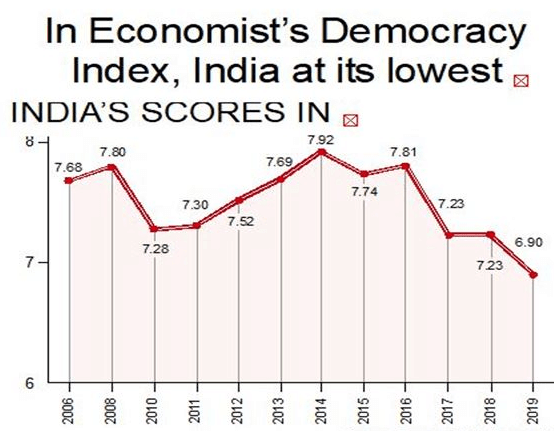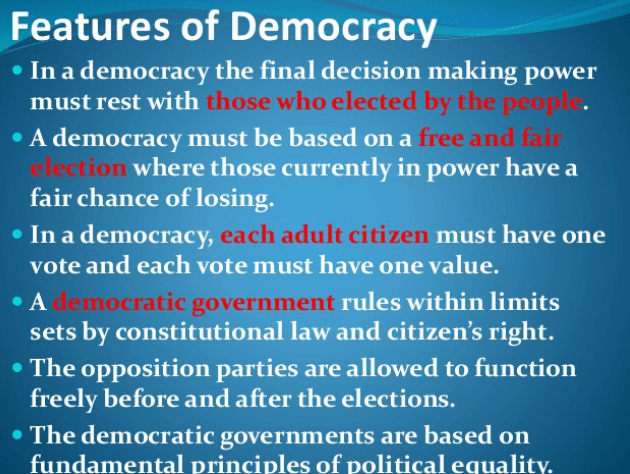The Hindu Editorial Analysis- 24th Sept, 2020 | Additional Study Material for UPSC PDF Download

1. A LIGHT TOUCH: ON REGULATION OF DIGITAL MEDIA-
GS 2- Important aspects of governance, transparency and accountability
Context
The Government has, in recent days, twice signalled that more rules to tackle the problems of unlawful content and harm-causing disinformation in the digital media space are in the offing(process).

Regulation Of Digital Media
(i) On Monday, in an affidavit filed in the case involving Sudarshan TV, responding to the Supreme Court’s call for suggestions to improve the self-regulatory mechanism for electronic media, the Centre said that the regulation of web-based digital media is the need of the hour, instead.
(ii) Without any checks, it told the Court, digital media can spread “venomous(poisonous) hatred”, terror and violence.
(iii) On the same day, the Minister of State for Electronics and IT said in a written reply to the Lok Sabha that his ministry is working to amend the Information Technology (Intermediaries Guidelines) Rules, 2011, to make intermediaries more responsive and accountable.
(iv) It is difficult to disagree with the view that the Internet is a space where finding truthful facts can be often challenging, and that polarising(dividing) opinions, hate speech, and disinformation abound.
(v) Many lives have been lost to such disinformation-fuelled violence in India in recent years.
(vi) But it is also difficult to agree with the view that more rules are an answer to an age-old problem, only, now amplified by technology-based platforms.
(vii) That more regulation will solve this is a fanciful idea.
Intervention Imperative
(i) For one, the laws to tackle incendiary(provocative) content and hate speech that fuels violence are already in place.
(ii) What is seen lacking is a will to uniformly apply these rules, irrespective of political affiliations.
(iii) The flip side is that the net is a place where there is a free sharing of information and ideas.
(iv) So, the question worth asking is if it is possible to ever regulate the Internet without throttling(controlling) it, like China has done.
(v) The fear that bringing more rules is a euphemism(substitute) for censorship cannot be brushed away.
(vi) These questions are all the more important because there has been a wave of investments in the digital news media space in recent years.
(vii) A large number of these media sites and magazines pursue legitimate journalism initiatives, which not only have the proper mechanisms to deliver quality but also operate with a high degree of accountability.
(viii) Attempts at making new rules for intermediaries such as Google and Facebook need to be well thought-out and measured.
(ix) Earlier attempts at imposing a high degree of liability on them for content posted on their platforms have not survived legal scrutiny, with Section 79(1) of the IT Act, 2000, giving them some immunity(protection) in this regard.
(x) An intervention that is light and well considered is what will work.
Conclusion
Problematic content abounds in the digital space, but regulation must be sagacious(wise).
2. UNLOCKING CAMPUSES: ON UGC’S REVISED ACADEMIC CALENDAR-
GS 2- Issues relating to development and management of Social Sector/Services relating to Education
Context
The University Grants Commission has published a revised academic calendar for 2020-21, under which classes can be started for first year undergraduate and postgraduate students from November 1, but the prospects of a normalised regime of education remain far from clear.

Apprehensions
(i) In a circular that factors in the uncertainties surrounding COVID-19, the UGC has offered institutions the option of offline, online or blended modes of instruction.
(ii) For school education, many States have allowed reopening for Classes 9 and above from September 21, based on the Centre’s instructions for the unlock phase.
(iii) These measures, with their semblance of normality, may bring some relief to parents, but their outcomes are not predictable.
(iv) That becomes clear from the experience of the U.S. and the U.K.- there is apprehension(worries) among parents, teachers and staff that they may get infected, and governments are under greater pressure to test, trace and isolate in communities with schools and colleges.
(v) A U.S. study in pre-print, conducted by four educational institutions after students returned to in-person classes, showed that infections for counties with campuses rose by 3,000 a day over the median value.
(vi) Another estimate for virus cases linked to school reopening, made by other researchers, put the figure at over 21,000; college cases in the U.S. exceeded 88,000.
(vii) In Britain, teachers’ unions voiced deep concern over poor preparedness ahead of school reopening in September.
(viii) The government’s guidance there included a rotation system for students, and compulsory face masks in contact areas.
Need Commitment From States
(i) India’s move to unlock education coincides with a reported reduction in overall daily incidence of infection, although absolute numbers are frighteningly high.
(ii) If the UGC’s campus calendar is implemented as planned, it would require a high level of commitment among States to do what countries such as Germany, Denmark and Norway have done: provide free RT-PCR testing and pursue contact tracing where students test positive.
(iii) Yet, some State governments seem to be focused on managing the numbers rather than the pandemic, slashing overall testing rates, and inflating test numbers using less reliable rapid antigen tests to reduce positivity rates.
(iv) This approach is fraught(risky), and the consequences of statistical illusions could prove disastrous(harmful).
(v) Students have, no doubt, experienced a long summer of discontent, with just the option of online classes; the examination schedule and admissions systems were severely disrupted.
(vi) But it is also true that many of them live in multi-generational households, potentially bringing home the risk of infection to older, at-risk individuals.
(vii) Unlock for schools and colleges can, therefore, be seen only as a work in progress, requiring constant vigil, strict adherence to masking and distancing, and full access to testing and treatment.
(viii) The government’s messaging cannot carry conviction if it cautions the public about the pandemic on the one hand, while relaxing norms for campus activity on the other.
Conclusion
A surge in cases in schools and colleges should be prevented using a ‘test-trace-isolate’ model.
3. SEEING DYSTOPIA IN INDIA’S DEMOCRACY-
GS 2- Indian Constitution- historical underpinnings, evolution, features, amendments, significant provisions and basic structure
Context
(i) The United Nations has declared September 15 ‘International Day of Democracy’.
(ii) An entry on its website states that this “provides an opportunity to review the state of democracy in the world”. To review the state of democracy in India would be timely given the times we are living through.
(iii) Indeed by now, as India meets fresh challenges almost daily, for us to do so is arguably more important than to celebrate independence from colonial rule, which we do out of habit annually.
(iv) But to review the state of democracy in India we would need to adopt a suitable criteria.

A Partial Evaluation
(i) Formally, India is a democracy alright. There are multi-party elections with universal suffrage subject only to an age restriction.
(ii) In evaluations of democracy in India it is often observed, to its credit, that it is the world’s largest democracy.
(iii) Further plaudits are given for the smooth changeover in government after elections, the existence of an independent press and judiciary, and the guarantee of civil liberties justiciable in courts of law.
(iv) While these are valid observations, the assessment is based on a partial evaluation.
(v) To an extent it amounts to admiring a form of government for its own sake without concern for the socioeconomic outcomes that are produced.
(vi) Outcomes differ among countries that are democracies. Take for instance the life satisfaction that citizens report.
(vii) First, it should be noted that this is potentially an important metric as it is based on people’s perceptions on what matters most, including the responsiveness of the government to their needs.
(viii) In the UN’s World Happiness Report for 2020, the list of top 10 countries is heavily loaded with the democracies of western Europe.
(ix) The U.S. barely edges into the top 20. India, on the other hand, is ranked 144 out of the 153 countries evaluated.
(x) Further, its ranking has dropped in recent years. We should be giving serious thought to both the fact of India’s low ranking on the happiness index and its slide.
(xi) To my mind, the criterion that in a democracy the people must be satisfied with their life is given very little thought these days. It was not so in the early days of our republic.

BUILT BY THE PEOPLE
(i) Two leaders who had recognised this criterion in their engagements with the public were Jawaharlal Nehru and Sarvepalli Radhakrishnan.
(ii) Nehru was explicit in his speech on August 15, 1947 when he stated that the goal of independence was to create institutions which will ensure justice and fullness of life to every man and woman.
(iii) Note that Nehru had not promised that the government will create these institutions.
(iv) He was far too aware that democracy is not synonymous with statism; it is about the people.
(v) Ultimately, the institutions that enable persons to lead fulfilling lives are built by the people themselves.
(vi) Let us look at the examples, all from the United States. In the 1960s, that country saw movements for black empowerment, women’s emancipation and sexual liberation.
(vii) These movements were remarkably successful in the outcomes they achieved, while receiving no support from the U.S. state.
(viii) This is the sense in which it may be said that it is the people who build the institutions that matter.
(ix) That said, however, the state has a role in their building. Laws must not constrain liberty when it is self-affirming and must change when it is realised that they do.
On Development
(i) The role of the state does not end with removing restraints though.
(ii) It extends to the endowment of individuals with capabilities in the sense of Amartya Sen. Prof. Sen had thought of capabilities as the endowments(facility, gift) that allow individuals to undertake the functionings, or do the things, that they value.
(iii) We can think of a person’s health and education as among the most important inputs into the capabilities that they end up possessing.
(iv) While radical approaches to empowerment rightly emphasise the importance of self-help, it is not sufficiently recognised that individuals cannot easily equip themselves with capabilities, requiring the state to intervene.
(v) Think of a person born into poverty or a woman born into wealth but into a world with social sanction against education for women.
(vi) Similarly, historically, the caste system in India had excluded a large section from education.
(vii) While private initiative should not be de-legitimised, it has had only a limited impact on building capabilities in India as it has focused on those with the ability to pay.
(viii) In a move to measure the capabilities of a population, the UN devised the Human Development Index. The main elements of this are health and education.
(ix) As with the UN’s Happiness Index, India fares very poorly in the UN’s Human Development Index too.
(x) In 2019, India ranked 129th out of 189 countries. Judged in terms of human development — and one would be hard put to defend any other sense in which development is to be understood — Indian democracy is severely challenged.
Liberty And Capability
(i) Pointing to the incongruence(unsuitability) between India’s low level of human development and its status as a democracy evokes(brings) the response that this is to see the latter in instrumental terms.
(ii) Democracy it is asserted is a form of government, namely government by discussion.
(iii) The answer to this deflection is that democracy may be a form of government but surely the people have come to adopt this particular form of government with a goal in mind. We may safely assume a fulfilling life is that goal.
(iv) Authoritarianism is not compatible with such a life, only democracy, which at least in principle grants individuals a voice in governance, is.
(v) Second, people adopt democracy so that they can participate in their own governance.
(vi) They cannot but have foreseen that they must be endowed with capabilities if this is to be possible at all.
(vii) Thus, liberty and capability are conjoined as the ultimate aspiration in a democracy.
Neglect And Repression
(i) In India, the state’s ritualistic attachment with the procedures of democracy has not been matched by an awareness of its implicit goal of a fulfilling life for Indians.
(ii) By the 1950s, freedom of speech had been restricted by the First Amendment to the Constitution and the Directive Principles, that had enjoined(urge) upon the state to promote health and education, had been all but forgotten.
(iii) Inevitably, the consequential underinvestment in a public health system has left the country severely unprepared for the emergency when COVID-19 struck.
(iv) After reading of bodies left lying in their wards, we now read of an emerging shortage of something so basic as oxygen supply in metropolitan hospitals.
(v) COVID-19 affects the human respiratory system and oxygen is vital to avert(prevent) the loss of life.
(vi) Those who have survived thus far live with foreboding(anxiety) of a gruesome(bad) end. Not only has the state neglected its responsibility but it has resorted to repression when its inaction is questioned.
(vii) Recently, an agency reported that a representative of the State in southern Andhra Pradesh publicly threatened with arrest a government doctor who had dared to mention at a review meeting that there were not enough beds in the primary health centre that he was responsible for.
Conclusion
(i) Dystopia was imagined as a place where the people experience great suffering as they fend for themselves under the watchful eyes of an authoritarian state.
(ii) Is it so far from where we live today?
|
21 videos|562 docs|160 tests
|
FAQs on The Hindu Editorial Analysis- 24th Sept, 2020 - Additional Study Material for UPSC
| 1. What is the significance of reading The Hindu editorial for UPSC preparation? |  |
| 2. How can I effectively analyze The Hindu editorial for UPSC preparation? |  |
| 3. How can I improve my vocabulary through The Hindu editorial for UPSC preparation? |  |
| 4. Can reading The Hindu editorial alone guarantee success in the UPSC exam? |  |
| 5. How can I manage time effectively while reading The Hindu editorial for UPSC preparation? |  |
















